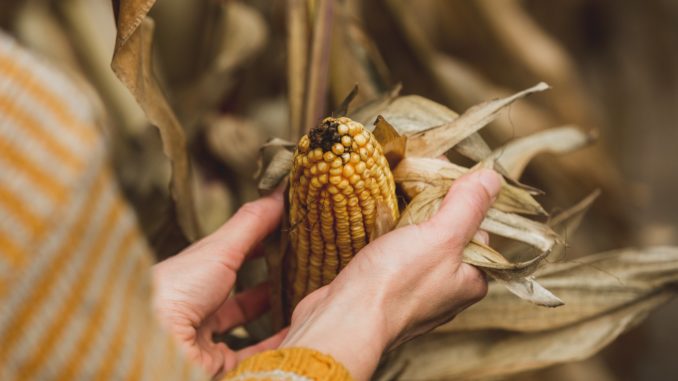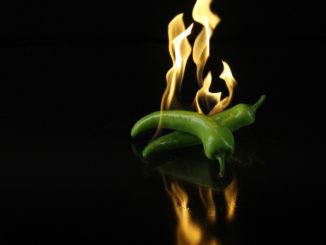
By Kathleen Miller
Gaia’s Farm and Gardens
Sustainable living, gardening, and farming is based on an understanding of ecosystems, the study of relationships between organisms and their environment. It has been defined as an integrated system of plant and animal production practices that will last over time. Having a harmonious relationship with Gaia (Mother Earth) provides food for people, enhances the natural environment upon which the community depends, makes efficient use of resources and integrates natural cycles that sustain economic viability as well as enhances the quality of life for the community as a whole.
In the past, drying, salting, and live storage were the only ways known for preserving produce. The Indians of North America depended on sun-dried foods. American settlers of the old West survived bitter winters by eating salt-cured produce or vegetables stored in root cellars. Nowadays we can choose among a much larger variety of processes including canning, freezing and jellying. Besides being more convenient, these methods have transformed the task of preserving food into a skilled art form.
Food spoils for two reasons, the action of external biological agents, such as bacteria and molds, and the digestive action of naturally occurring enzymes. The art of “putting food by” as canning and other preserving methods consist of slowing down or halting both types of spoilage while at the same time preserving nutrient value and having food tasting good.
Live storage, either above ground or below ground, preserves produce with minimum alteration in taste, color and vitamin content. However, such storage requires certain temperature ranges: winters must be cold enough to slow down food deterioration, but food should not be allowed to freeze. In addition, only certain foods and vegetables can be stored by this method. Example apples, pears, and root crops.
Canning involves heating to high temperatures resulting in vitamin loss and changes in taste. Water-soluble vitamins can be retained by conserving the cooking liquid, but some others are destroyed. If food is canned in jars, store it in a dark place to avoid loss of riboflavin by exposure to light. A cool area, below 65 degrees, helps retain nutrients.
Freezing is the most modern way of food preservation and has a minimum effect on flavor and food value if properly prepared and carefully packaged. For best results, frozen foods should be stored at 0 degrees or below.
Salt curing alters the taste of the food. In the case of pickling and fermenting the results are delicious. If salt curing is done in a strong salt solution, the nutritional value is greatly reduced because the food must be thoroughly washed before it can be eaten and through that process, a lot of vitamins and minerals will rinse away. A weaker salt solution will preserve more nutrients, but there will be a greater risk of spoilage. Salt curing is not reliable for long term storage: pickles, sauerkraut, and relishes must be canned if they are to be stored for more than a few weeks after the three to five-week salt curing process is finished.
Jelling changes the taste of the food because of the large amounts of sugar, honey, or other sweeteners that are needed in order to form a gel. In addition, some vitamins are lost during the heat processing required to sterilize fruit and make an airtight seal.
Drying retains a high percentage of most vitamins but if dried foods are stored for long periods destruction of vitamins can result because of oxidation, especially if food has not been properly blanched. Vitamins A, E and some B complex vitamins are broken down by light. As a result, considerable food value can be lost by drying outdoors in direct sunlight.
Almost every fruit and vegetable can be stored by one of the preserving methods: live storage (root cellars and in-ground storage), canning, freezing, salt curing, jelling and drying.
Gaia Grows Tips for Preserving Produce
Produce Recommended Storage Method
| Apples | Live storage, canning, jams, and jellies, drying |
| Apricots | Canning, jams, and jellies, drying |
| Asparagus | Canning, freezing |
| Beans-Green | Canning, freezing, salt curing |
| Beans-Lima | Canning, freezing, drying |
| Beets | Live storage, canning, salt curing |
| Broccoli | Freezing |
| Cabbage | Live storage, salt curing |
| Carrots | Live storage, salt curing |
| Cauliflower | Freezing, salt curing |
| Celery | Live storage |
| Cherries | Canning, jams, and jellies |
| Corn | Canning, freezing, salt curing |
| Cucumbers | Salt curing |
| Onions | Live storage |
| Parsnips | Live storage |
| Peaches | Canning, jams, and jellies, drying |
| Pears | Live storage, canning, salt curing, jams, and jellies, drying |
| Peas | Canning, freezing, drying |
| Peppers | Freezing, salt curing |
| Plums | Canning, jams and jellies, drying |
| Potatoes | Live storage, canning |
| Pumpkin | Live storage, canning |
| Raspberries | Jams and jellies |
| Spinach | Canning, freezing |
| Squash-Summer | Canning, freezing |
| Squash-Winter | Live storage, canning |
| Sweet Potatoes | Live storage |
| Tomatoes | Canning, salt curing, drying |
| Turnips | Live storage, salt curing |
Support Northern Colorado Journalism
Show your support for North Forty News by helping us produce more content. It's a kind and simple gesture that will help us continue to bring more content to you.
BONUS - Donors get a link in their receipt to sign up for our once-per-week instant text messaging alert. Get your e-copy of North Forty News the moment it is released!
Click to Donate


